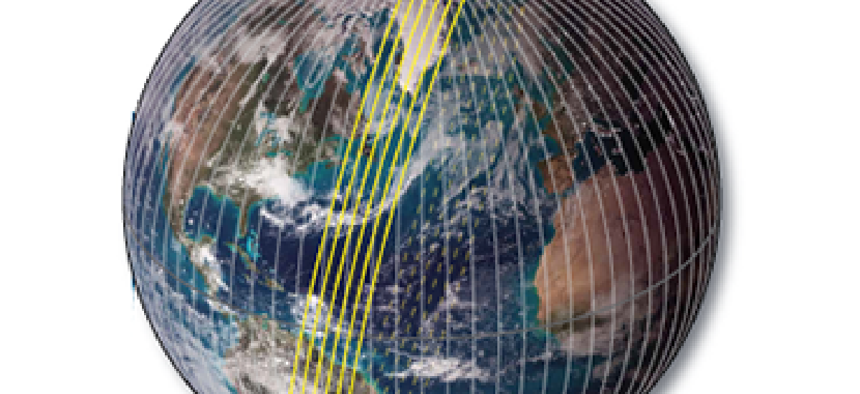NOAA retires longest-serving satellite

The NOAA-17 satellite provided weather and climate data for more than three times its life expectancy.

By orbiting pole to pole as the Earth rotates below it, a satellite observes the entire planet. (Image adapted from a NASA brochure.)
Talk about a return on investment.
One of the National Oceanic and Atmospheric Administration's longest-operating spacecraft, NOAA-17, has been retired after more than a decade of service, more than tripling its three-year life expectancy and continuing to provide vital data that feeds weather prediction models back on Earth.
Launched in 2002 for about $200 million, the polar-orbiting satellite made 55,000 orbits around the globe, logging 1.5 billion miles of travel, all the while collecting massive amounts of valuable temperature, moisture and image data.
NOAA-17's retirement leaves five functional polar-orbiting satellites left in its fleet, though two are actually older and the newest, Suomi NPP, is a converted demonstration satellite launched in October 2011 to mitigate a potential gap in weather date provided by satellites.
The four oldest of the remaining polar orbiting satellite – NOAA-15, NOAA-16, NOAA-18 and NOAA-19 – have exceeded their lifespan and Suomi NPP was not built to last long, facts that have led to warnings from the Government Accountability Office and others that a pending gap in satellite data could severely limit weather forecasts.
NOAA signaled NOAA-17's fate on Feb. 18 when it began the deactivation process. Because most satellite orbits decay over time, there is a high likelihood that NOAA-17's official demise will come in fiery inferno when it becomes acquainted with the Earth's atmosphere -- though a NOAA spokesman told FCW that could take as long as 300 years.
"NOAA-17 helped our forecasters see the early development of severe weather from tornadoes and snow storms to hurricanes, including the busiest hurricane season on record – 2005," said Mary Kicza, assistant administrator of NOAA's Satellite and Information Service. "It also tracked subtle changes in the environment that signaled the onset of drought and wildfire. NOAA-17's long life is a credit to the engineers who built and operated it and the technology that sustained it. Although we say farewell to NOAA-17, we still operate a dependable fleet of satellites that continue to provide crucial data."
The satellite was part of the international Search and Rescue Satellite-Aided Tracking (SARSAT) network, which has helped rescue 33,000 people worldwide since 1982 by detecting signals from emergency beacons.
As NOAA teams with NASA to develop and launch by 2017 the next generation of polar-orbiting satellites, the Joint Polar Satellite System, NOAA officials say it is too early to tell how long the life spans of the next generation of satellites will be. The program to develop them costs in the billions, not the millions, and while they'll have new technologies such as climate sensors, it won't be easy to top the staying power of NOAA's current crop of polar-orbiting satellites.
NOAA-17, though, has nothing on some of the longest operating satellites in history. The twin Voyager 1 and 2 spacecraft, launched in 1977, are still sending scientific information back to Earth through the Deep Space Network even as they are speeding out of the solar system toward interstellar space.






